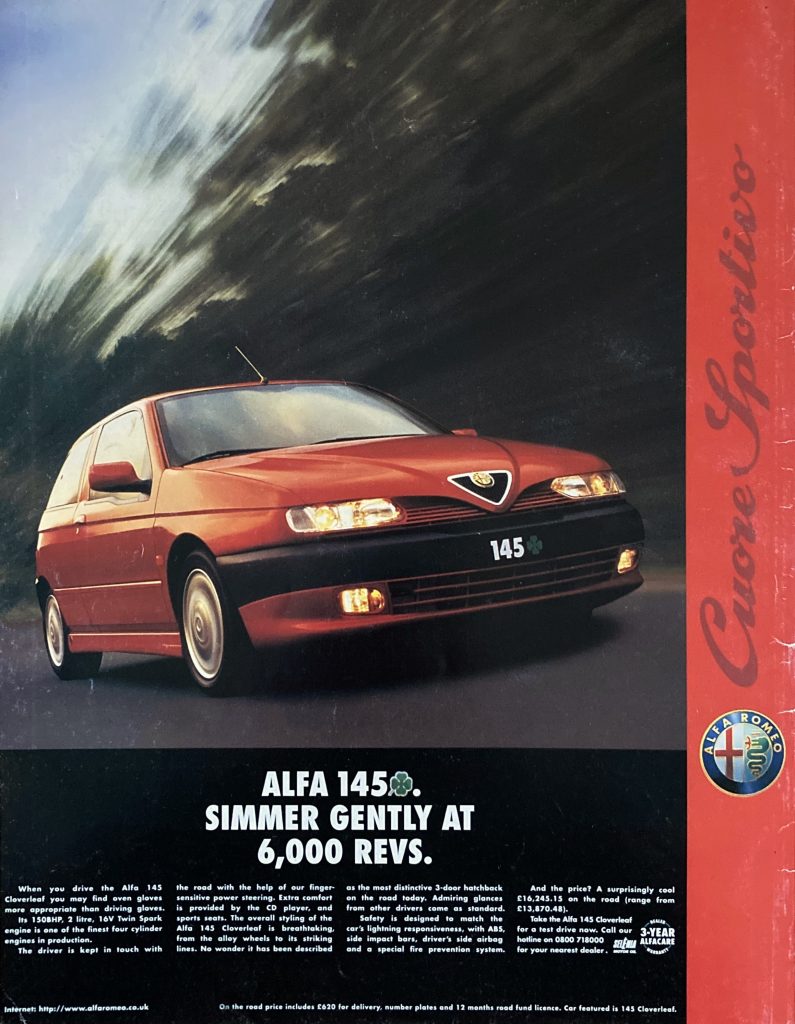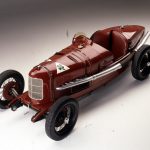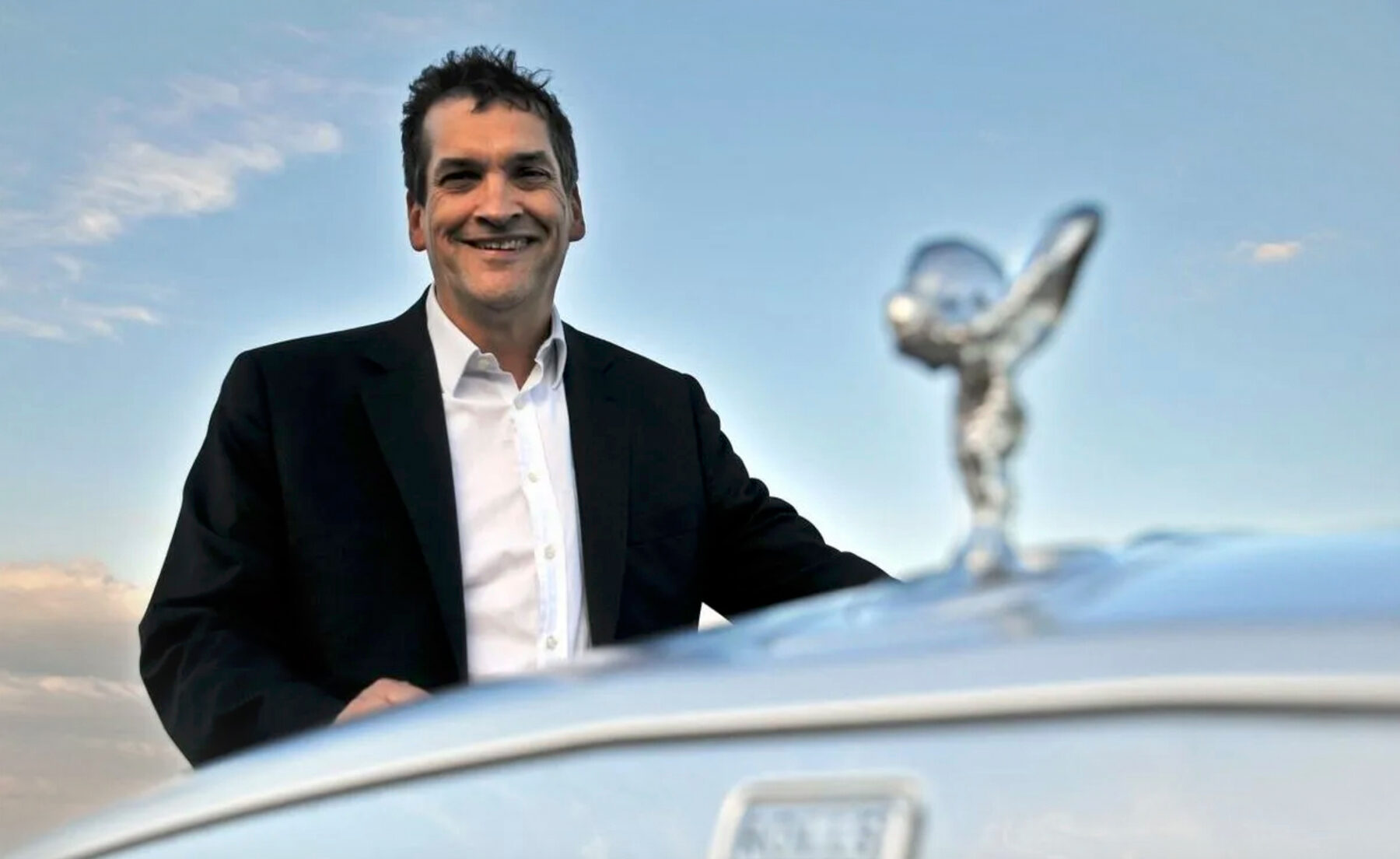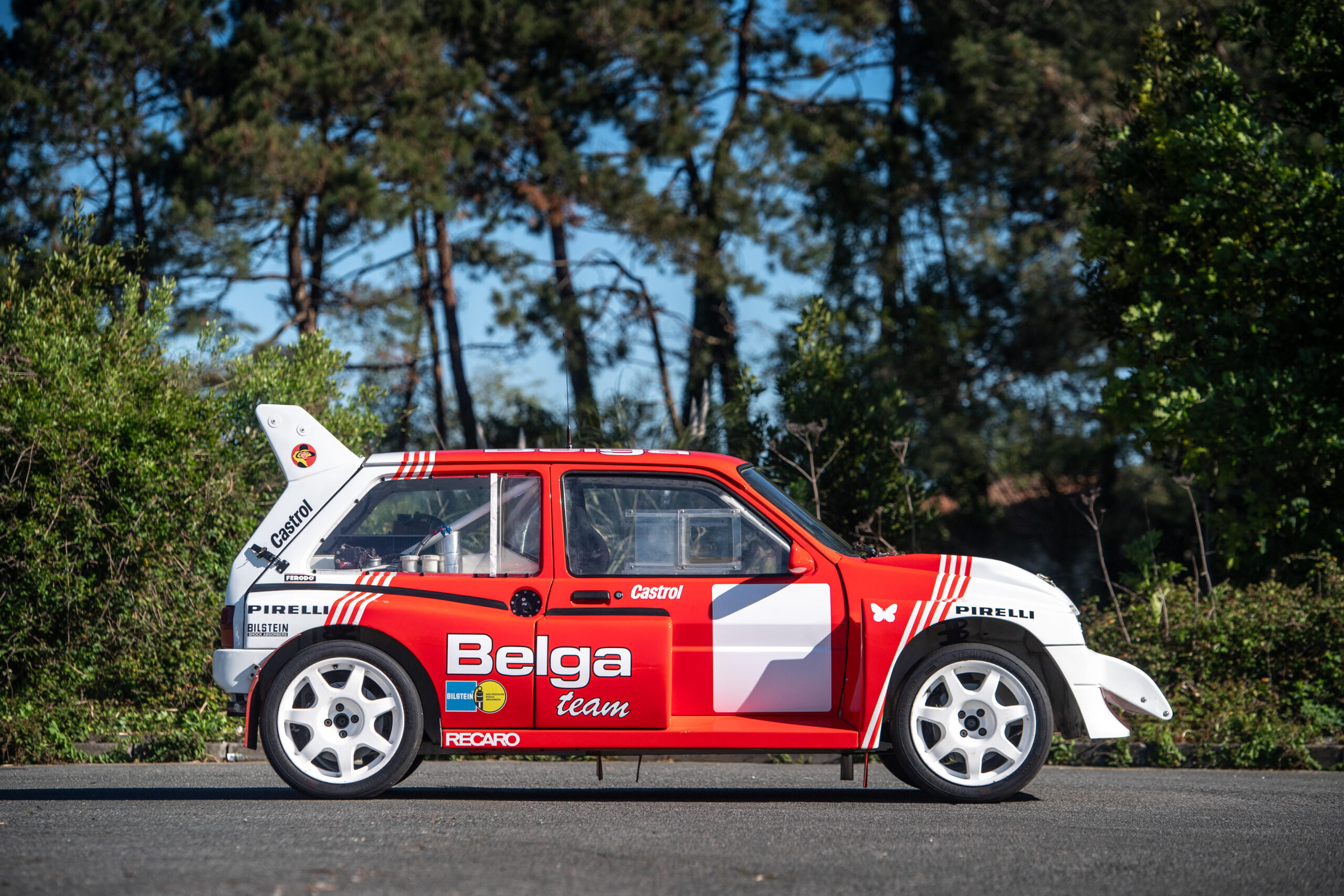There’s amusement to be had reading the breathless copy accompanying some old car advertisements for performance cars of the late 20th century.
The pace of automotive development had always varied, sometimes in a painfully slow climb and at other times taking gigantic leaps, but peering back from the 2020s, it’s amusing to think that for a time in the late 1980s and early 1990s, around 150bhp was as much as you could put through the front wheels of a car without it becoming a hedge-seeking missile.

The cars that developed more – think Rover’s near-200bhp Coupe or the similarly powerful Alfa Romeo 164 when equipped with a V6 – were the exceptions that proved the rule, though the Lancia Thema 8.32 was admirably composed. In a hot hatchback though, 150-odd was more than enough to test a car’s traction.
Which explains why this ad for the Alfa Romeo 145 Cloverleaf, which made a nice round 150bhp at 6200rpm, suggested you “may find oven gloves more appropriate than driving gloves.” Nevermind that Honda made a Civic with 8bhp more, or Peugeot a 306 with an additional 17 horses.
In fact, things escalated fairly quickly after the Cloverleaf arrived. Just before the millennium, Renault unleashed the Clio 172, with 170bhp, and in 2001 the 197bhp Honda Civic Type R was perhaps the first of the hot hatches that kicked off the real power race. It would seem that 200 horsepower was now the minimum entry requirement.
A wave of turbocharged machines followed – easier for developing big power than Honda’s naturally aspirated method – and today, it’s perfectly normal to find 300-plus, more than double that of the Alfa and, even more remarkably, none the worse for attempting to put it to the ground. In the mid 1990s, BTCC super tourers were struggling to send 300bhp through the front wheels with slick tyres, and now you can do it in a Civic that’ll ferry the family around.
Incidentally, Alfa did join the power race itself, in part thanks to its glorious Busso engines, as previously found in the torque-steering 164. At its 3.2-litre peak, the Alfa 147 and 156 GTAs made 247bhp, though it’s fair to say these cars had their own limitations, while Alfa’s own dabble with turbocharging in the 2010s Giulietta hatchback gave us a 237bhp Quadrifoglio Verde.

Back to the 145, though, which may no longer seem as hot in a modern context but was still among the better hot hatches of its era. The breed had been in a lull in the early 1990s, the car crime wave of the 1980s resulting in a market full of deliberately watered-down models that wouldn’t scare insurance companies off, but by the time the Cloverleaf cropped up in 1996, things were picking up.
The Chris Bangle–designed 145 had been through a wobble itself, its carryover flat-four engines dating back to the Alfasud no longer cutting it in what was now a heavy car. But Alfa’s 2-litre Twin Spark engine from the GTV did a much better job, and Alfa paired it with the fast steering rack (2.2 turns lock to lock) also borrowed from the GTV.
Combined with a set of neo-retro ‘teledial’ alloy wheels, the result was a car that looked cracking (if you could get on with the squared-off styling), turned sharply, and had a rasping soundtrack to accompany its brisk straight-line performance; Alfa claimed 0–60mph in 8 seconds flat.
It was, in the best Alfa traditions, still flawed: The driving position was too high, the ergonomics were haphazard, the ride quality was just on the wrong side of harsh, and to butcher Alfa’s own cooking metaphor, the company left the 145 out on the sideboard to go stale as its rivals were busy preparing fresh dishes. In 1997, Alfa gave left-hand-drive cars an attractive new dashboard, but the UK market got leftovers, keeping the creaky old dash until the 147 arrived in 2000.
But today, that matters less than the 145’s distinctive styling, the Twin Spark’s growling engine note, and a driving experience that could be nothing else but a 1990s Alfa Romeo. And as modern turbocharging has made chasing the red line almost irrelevant, even the Cloverleaf’s modest 6200rpm power peak sounds quite appealing.









